Themed collection 2022 Pioneering Investigators

Contributors to the Pioneering Investigators collection 2022
This profile article showcases the researchers who have contributed an article to the 2022 Pioneering Investigators collection.

Chem. Commun., 2023,59, 1869-1888
https://doi.org/10.1039/D3CC90023A
Targeting chemokine receptors from the inside-out: discovery and development of small-molecule intracellular antagonists
Intracellular, allosteric antagonists for chemokine receptors hold great promise for the therapeutic modulation of chemokine responses.
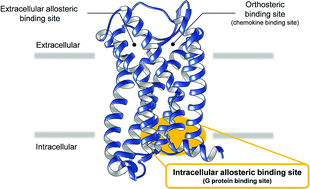
Chem. Commun., 2022,58, 4132-4148
https://doi.org/10.1039/D1CC07080K
3-Ethyl-6-vinyltetrahydro-2H-pyran-2-one (EVP): a versatile CO2-derived lactone platform for polymer synthesis
3-Ethyl-6-vinyltetrahydro-2H-pyran-2-one (EVP) is a CO2-derived lactone synthesized via Pd-catalyzed telomerization of butadiene.
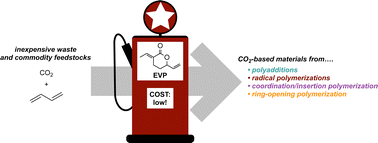
Chem. Commun., 2022,58, 9586-9593
https://doi.org/10.1039/D2CC03516B
d–sp orbital hybridization: a strategy for activity improvement of transition metal catalysts
This article highlights the recent progress of d–sp hybridization catalysts, and emphasizes d–sp orbital hybridization as a unique strategy to regulate the electronic structures and catalytic performances of transition metals.
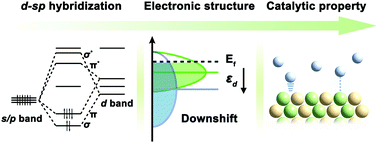
Chem. Commun., 2022,58, 7730-7740
https://doi.org/10.1039/D2CC02299K
Gaining control over conjugated polymer morphology to improve the performance of organic electronics
Conjugated polymer (CP) microstructure plays a crucial role in determining the characteristics of a target device. Here, we provide an overview of the key aspects of the CP microstructure-property relationship carried out in our group.
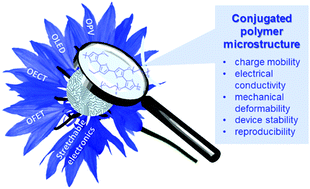
Chem. Commun., 2022,58, 6982-6997
https://doi.org/10.1039/D2CC01430K
Molecular polymer bottlebrushes in nanomedicine: therapeutic and diagnostic applications
Molecular polymer bottlebrushes offer a comprehensive toolbox for nanomaterials design. Their tuneable and multifunctional architecture has accelerated their use in nano-bio research and nanomedicine applications.
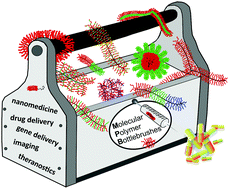
Chem. Commun., 2022,58, 5683-5716
https://doi.org/10.1039/D2CC01601J
Understanding the reactivity of frustrated Lewis pairs with the help of the activation strain model–energy decomposition analysis method
This Feature article presents recent representative applications of the combination of the Activation Strain Model of reactivity and the Energy Decomposition Analysis methods to understand the reactivity of Frustrated Lewis Pairs (FLPs).
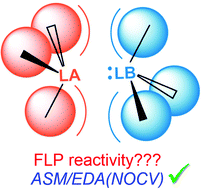
Chem. Commun., 2022,58, 4931-4940
https://doi.org/10.1039/D2CC00233G
Understanding PEDOT doped with tosylate
The conducting polymer of PEDOT doped with tosylate has properties and behaviour making it interesting for use in conformable electronic devices. Understanding this material is of research interest.
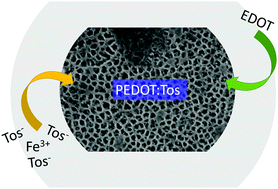
Chem. Commun., 2022,58, 4553-4560
https://doi.org/10.1039/D2CC01100J
Collective plasmonic resonances enhance the photoluminescence of rare-earth nanocrystal films processed by ultrafast annealing
Rapid thermal annealing allows ultrafast processing of rare-earth nanocrystal thin films to achieve close-to-one photoluminescence quantum yield while preserving the transparency of the layers, which further enables their integration with photonic architectures.
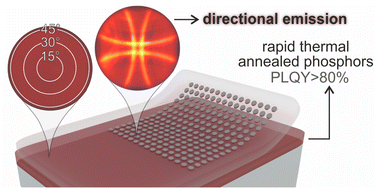
Chem. Commun., 2023,59, 1289-1292
https://doi.org/10.1039/D2CC04779A
Resonant acoustic mixing (RAM) for efficient mechanoredox catalysis without grinding or impact media
Using barium titanate as the piezoelectric catalysts, we demonstrate the ability to conduct mechanoredox reactions via resonant acoustic mixing, without grinding media or bulk solvent.

Chem. Commun., 2023,59, 1010-1013
https://doi.org/10.1039/D2CC06013B
Comparative study of sonication-assisted liquid phase exfoliation of six layered coordination polymers
Liquid phase exfoliation of six layered coordination polymers suggests an impact of the material porosity on the nanoplatelets’ dimensions.

Chem. Commun., 2023,59, 55-58
https://doi.org/10.1039/D2CC03366F
Oxygen-atom transfer photochemistry of a molecular copper bromate complex
We report the synthesis and oxygen-atom transfer (OAT) photochemistry of [Cu(tpa)BrO3]ClO4.
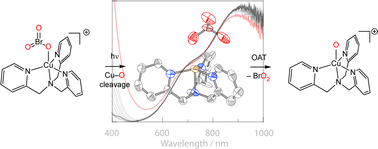
Chem. Commun., 2022,58, 12608-12611
https://doi.org/10.1039/D2CC04403J
Photocatalytic deracemisation of cobalt(III) complexes with fourfold stereogenicity
The deracemisation of fourfold stereogenic cobalt(III) diketonates with a chiral photocatalyst is described.

Chem. Commun., 2022,58, 12172-12175
https://doi.org/10.1039/D2CC05196F
Threefold reactivity of a COF-embedded rhenium catalyst: reductive etherification, oxidative esterification or transfer hydrogenation
The reactivity of the novel Re(I) catalyst [Re(C12Anth-py2)(CO)3Br] is modulated by its interactions with the covalent organic framework (COF) TFB-BD.

Chem. Commun., 2022,58, 12074-12077
https://doi.org/10.1039/D2CC03173F
Atom-efficient synthesis of a benchmark electrolyte for magnesium battery applications
The Mg battery electrolyte complex [Mg2Cl3]+ [AlPh4]− is prepared in high yield with 100% atom economy via a AlCl3/MgPh2 ligand exchange reaction. Spectroscopic studies suggest a simpler solution ionic composition than seen previously whilst maintaining high electrochemical performance.
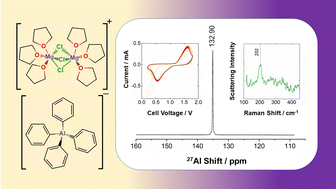
Chem. Commun., 2022,58, 12070-12073
https://doi.org/10.1039/D2CC03290B
Sub-bandgap trap sites for high-density photochemical electron storage in colloidal SrTiO3 nanocrystals
We report facile and reversible electron storage in colloidal SrTiO3 nanocrystals using photochemical and redox titration methods.

Chem. Commun., 2022,58, 11835-11838
https://doi.org/10.1039/D2CC04328A
Triazine based eccentric Piedfort units towards a single source hydrogen bonded network
Herein we report a hydrogen-bonded three-dimensional network originating from a single source precursor, sym-triisopropylaminotriazine, that is both a donor and an acceptor of hydrogen bonds.
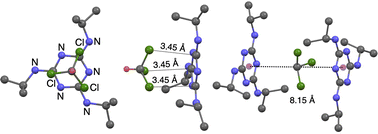
Chem. Commun., 2022,58, 11815-11818
https://doi.org/10.1039/D2CC03327E
Seed-directed synthesis of chiroptically active Au nanocrystals of varied symmetries
Chiral plasmonic nanocrystals with varied symmetries were synthesized by L-glutathione-guided overgrowth from Au tetrahedra, nanoplates, and octahedra, highlighting the importance of chiral molecule adsorption at transient kink sites.

Chem. Commun., 2022,58, 11575-11578
https://doi.org/10.1039/D2CC04126J
Pressure and guest-mediated pore shape modification in a small pore MOF to 1200 bar
Guest-mediated flexibility in the metal–organic framework, Sc2BDC3, is examined under moderate pressure in a sapphire capillary cell, revealing pore-shapes changes at much lower pressures than previously reported.

Chem. Commun., 2022,58, 11507-11510
https://doi.org/10.1039/D2CC04649K
Enolate SNAr of unactivated arenes via [(η6-arene)RuCp]+ intermediates
SNAr of unactivated arenes with enolate nucleophiles is facilitated by π-coordination to Ru and subsequent product release by photolysis.
![Graphical abstract: Enolate SNAr of unactivated arenes via [(η6-arene)RuCp]+ intermediates](/en/Image/Get?imageInfo.ImageType=GA&imageInfo.ImageIdentifier.ManuscriptID=D2CC02508F&imageInfo.ImageIdentifier.Year=2022)
Chem. Commun., 2022,58, 11240-11243
https://doi.org/10.1039/D2CC02508F
Light-mediated multi-target protein degradation using arylazopyrazole photoswitchable PROTACs (AP-PROTACs)
A new class of arylazopyrazole photoswitchable PROTACs (AP-PROTACs) enables light-triggered degradation of a specific ensemble of protein kinases.
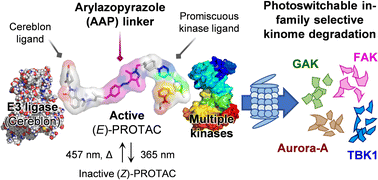
Chem. Commun., 2022,58, 10933-10936
https://doi.org/10.1039/D2CC03092F
Atmospheric pressure atomic layer deposition to increase organic solvent resistance of PDMS
Unique surface–subsurface treatment of PDMS by atomic layer deposition at atmosphere pressure increases solvent resistance by two orders of magnitude.

Chem. Commun., 2022,58, 10805-10808
https://doi.org/10.1039/D2CC02402K
Pyrochlore-structural Nd2Ta2O5N2 photocatalyst with an absorption edge of over 600 nm for Z-scheme overall water splitting
A pyrochlore-structural oxynitride Nd2Ta2O5N2 with a visible light absorption edge of ca. 620 nm was firstly explored to function as an effective H2-evolving photocatalyst for promising photocatalytic Z-scheme overall water splitting.
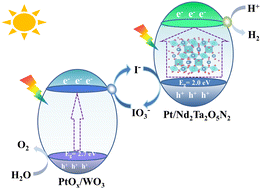
Chem. Commun., 2022,58, 10719-10722
https://doi.org/10.1039/D2CC02903K
Fusing 10-vertex closo-carborane anions with N-heterocyclic carbenes
Discovered by Knöth in 1964, the 10-vertex closo-carborane anion [HCB9H91−] is a classical bicapped square antiprism that contains an unusual pentacoordinate carbon center.
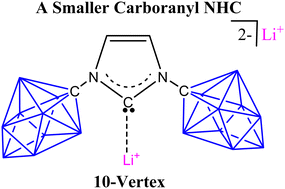
Chem. Commun., 2022,58, 10580-10582
https://doi.org/10.1039/D2CC02596E
Chemical activation of commodity plastics for patterned electroless deposition of robust metallic films
A metal-chelating polymer (PEI) was used to modify the surface of commodity plastics, yielding a generalizable procedure for producing strongly adhered metallic traces using electroless deposition.

Chem. Commun., 2022,58, 10337-10340
https://doi.org/10.1039/D2CC03848J
Reversible speed control of one-stimulus-double-response, temperature-sensitive asymmetric hydrogel micromotors
The use of microfluidics for generation of thermo-responsive micromotors in which the catalyst is either physically encapsulated or chemically linked.
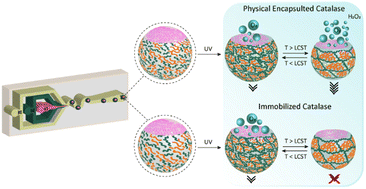
Chem. Commun., 2022,58, 10333-10336
https://doi.org/10.1039/D2CC02854A
Unsupervised classification of voltammetric data beyond principal component analysis
Effective dimensionality reduction for the classification of electrochemical data based on PCA, t-SNE and UMAP and different data formats, including image recognition and feature extraction.

Chem. Commun., 2022,58, 10170-10173
https://doi.org/10.1039/D2CC03187F
Sensitivity enhancement of an impedance-based cellular biosensor by a nanopatterned PEDOT:Nafion interface
A nanopatterned PEDOT:Nafion composite interface was integrated onto interdigitated electrodes for enhanced sensitivity and dynamic range of impedance-based cellular biosensors.

Chem. Commun., 2022,58, 10012-10015
https://doi.org/10.1039/D2CC01703B
Amide bond hydrolysis of peptoids
A chiral non-coordinating substitution at N-terminal end within peptoids facilitates regio-selective amide bond hydrolysis mediated by a transition metal ion and/or an acidic buffer as evident by X-ray crystallographic analysis, supported by ESI-MS.

Chem. Commun., 2022,58, 9922-9925
https://doi.org/10.1039/D2CC02717H
Two-photon polymerization lithography enabling the fabrication of PEDOT:PSS 3D structures for bioelectronic applications
In this work, an innovative fabrication method for the realization of PEDOT:PSS-based conductive micropillars and 3D cage-like structures is presented, combining 2-photon lithography and electrodeposition techniques.

Chem. Commun., 2022,58, 9790-9793
https://doi.org/10.1039/D2CC03152C
Heterostructures of Cu2−xS/Cu2−xTe plasmonic semiconductors: disappearing and reappearing LSPR with anion exchange
Converting Cu2−xS nanorods to Cu2−xTe through anion exchange resulted in unexpected effects on the LSPR behaviour.

Chem. Commun., 2022,58, 9810-9813
https://doi.org/10.1039/D2CC01859D
γ-Agostic interactions in (MesCCC)Fe–Mes(L) complexes
γ-Agostic interactions in(MesCCC)Fe–Mes(L) complexes were observed in the crystal structures, NMR data, and DFT calculations.

Chem. Commun., 2022,58, 9626-9629
https://doi.org/10.1039/D2CC03260K
Imaging of antitubercular dimeric boronic acids at the mycobacterial cell surface by click-probe capture
Antitubercular ‘clickable’ diboronic acid agents are directly incorporated into the mycobacterial cell envelope through glycan-targeting.
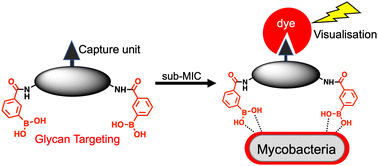
Chem. Commun., 2022,58, 9361-9364
https://doi.org/10.1039/D2CC02407A
Fabrication of antimicrobial polymeric films by compression molding of peptide assemblies and polyethylene
This paper presents compression molding of peptide assemblies with low-density polyethylene (LDPE) for the robust production of antimicrobial polymeric films.

Chem. Commun., 2022,58, 9357-9360
https://doi.org/10.1039/D2CC03018G
Intramolecular activation of strong Si–O bonds by gold(I): regioselective synthesis of 3-bromo-2-silylbenzofurans
The reactivity of gold-vinylidene complexes allows for Si–O bond activation. The applicability of this methodology was showcased by orthogonal transformations.
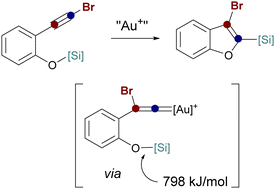
Chem. Commun., 2022,58, 9250-9253
https://doi.org/10.1039/D2CC03060H
A europium(III)-based nanooptode for bicarbonate sensing – a multicomponent approach to sensor materials
Using amphiphilic europium(III) complexes, antenna chromophore, and bulky cations as components, nanooptodes with a luminescent response to bicarbonate were assembled on a polystyrene nanoparticle platform.
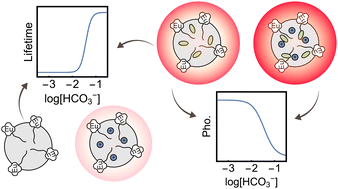
Chem. Commun., 2022,58, 9198-9201
https://doi.org/10.1039/D2CC02956A
Importance of steric bulkiness of iridium photocatalysts with PNNP tetradentate ligands for CO2 reduction
Steric bulkiness – the metric of the robustness of the self-photosensitized, single metal-active-site catalysis, elucidated in CO2 photoreduction.
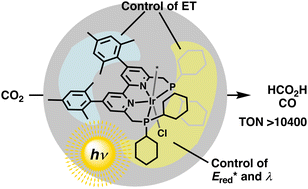
Chem. Commun., 2022,58, 9218-9221
https://doi.org/10.1039/D2CC01701F
Rationally designed Ru(II) metallacycles with tunable imidazole ligands for synergistical chemo-phototherapy of cancer
Herein, we construct a series of Ru(II) metallacycles with multimodal chemo-phototherapeutic properties, which exhibited much higher anticancer activity and better cancer-cell selectivity than cisplatin.
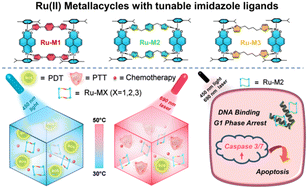
Chem. Commun., 2022,58, 9068-9071
https://doi.org/10.1039/D2CC03118C
Selectivity and efficiency in the ligation of the pyrene:abasic base pair by T4 and PBCV-1 DNA ligases
Remarkable selectivity was observed in the ligation of 5′-phosphate 1-pyrene strands across from an abasic lesion in a DNA-templated reaction by two different ligases suggesting that pyrene-terminated strands could be used in abasic site detection.

Chem. Commun., 2022,58, 9072-9075
https://doi.org/10.1039/D2CC03079A
Heavier N-heterocyclic half-sandwich tetrylenes
The best of both worlds: Lewis amphiphilic N-heterocyclic half-sandwich tetrylenes are reported, which combine structural features of di-N-heterocyclic tetrylenes and tetrelocenes.

Chem. Commun., 2022,58, 8934-8937
https://doi.org/10.1039/D2CC03107H
A recyclable thermoset with built-in thermocleavable group developed from a cis-cyclobutane-1,2-dicarboxylic acid
A novel class of recyclable thermoset has been developed from cis-3,4-diphenylcyclobutane-1,2-dicarboxylic acid (CBDA-4) due to its thermocleavability at high temperature.

Chem. Commun., 2022,58, 8850-8853
https://doi.org/10.1039/D2CC01502A
Pulse dipolar EPR for determining nanomolar binding affinities
CuII-nitroxide RIDME measurements at 100 nM protein concentration allow reliable extraction of dissociation constants and distances, while measurements at 50 nM protein concentration allow reliable extraction of dissociation constants only.

Chem. Commun., 2022,58, 8790-8793
https://doi.org/10.1039/D2CC02360A
Synthesis and optoelectronic properties of radical conjugated polyfluorenes
A novel redox-active fluorene monomer is synthesized and copolymerized with 9,9-dioctylfluorene and benzo[c][1,2,5]thiadiazole via Suzuki cross-coupling to produce alternating and tertiary copolymers.

Chem. Commun., 2022,58, 8630-8633
https://doi.org/10.1039/D2CC02406C
Orthogonally deconstructable and depolymerizable polysilylethers via entropy-driven ring-opening metathesis polymerization
The synthesis of low Tg polysilylethers via entropy-driven ring-opening metathesis polymerization is reported. These polymers can be depolymerized through olefin metathesis or deconstructed with acid or fluoride.

Chem. Commun., 2022,58, 8496-8499
https://doi.org/10.1039/D2CC02718F
Nickel-catalyzed decarboxylative cross-coupling of indole-3-acetic acids with aryl bromides by convergent paired electrolysis
Nickel-catalyzed decarboxylative cross-coupling of indole-3-acetic acids with aryl bromides by convergent paired electrolysis was developed in an undivided cell.

Chem. Commun., 2022,58, 8202-8205
https://doi.org/10.1039/D2CC02641D
Gold-catalysed rearrangement of unconventional cyclopropane-tethered 1,5-enynes
The synthesis of particular cyclopropane-tethered 1,5-enynes, namely 6-alkynyl-4-alkylidenebicyclo[3.1.0]hex-2-enes, enabled the discovery of unprecedented gold-catalyzed rearrangment to indenes.

Chem. Commun., 2022,58, 8206-8209
https://doi.org/10.1039/D2CC02869G
A chiral 3D silver(I)–benzenedithiolate coordination polymer exhibiting photoemission and non-linear optical response
A neutral coordination polymer made of Ag(I) and 1,3-benzenedithiolate, [Ag2(1,3-BDT)]n, displays both photoluminescence properties and a second harmonic generation signal.
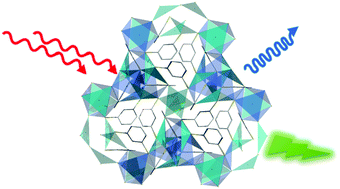
Chem. Commun., 2022,58, 8081-8084
https://doi.org/10.1039/D2CC02114E
Multivalent NHS-activated acrylates for orthogonal site-selective functionalisation of peptides at cysteine residues
A novel multivalent platform of NHS-activated acrylates was developed for the site-selective chemical appendage of multiple functionalities on native peptides, a highly demanding and complex tool of modern chemical biology.
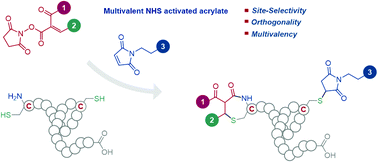
Chem. Commun., 2022,58, 7928-7931
https://doi.org/10.1039/D2CC02204D
Microemulsions for the covalent patterning of graphene
Emulsions are used as templates to pattern graphene covalently. When exposing graphene to a microemulsion, some regions are in contact with the aqueous phase which contains the reagent, while the rest are exposed to the oil phase and do not react.
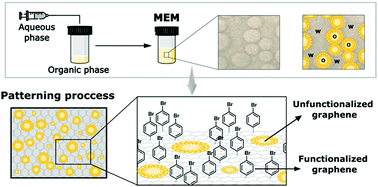
Chem. Commun., 2022,58, 7813-7816
https://doi.org/10.1039/D2CC01858F
Selective recognition of A/T-rich DNA 3-way junctions with a three-fold symmetric tripeptide
We describe a new approach to target non-canonical DNA 3-Way Junctions (3WJs) that relies on the cooperative and sequence-selective recognition of A/T-rich duplex DNA branches by three AT-Hook peptides attached to a three-fold symmetric and fluorogenic 1,3,5-tristyrylbenzene core.
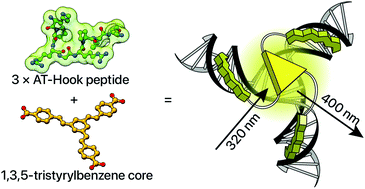
Chem. Commun., 2022,58, 7769-7772
https://doi.org/10.1039/D2CC02874C
Defect engineering in two-dimensional perovskite nanowire arrays by europium(III) doping towards high-performance photodetection
We demonstrate high-performance photodetectors based on Eu-doped 2D perovskite nanowire arrays. Thanks to the efficient carrier transport and suppressed trap density, the optimized Eu-doped photodetectors show an excellent responsivity of 6.24 A W−1.

Chem. Commun., 2022,58, 7829-7832
https://doi.org/10.1039/D2CC02758E
Semiconducting silicon–phosphorus frameworks for caging exotic polycations
Silicon phosphides with a new structure have been synthesized. These salt inclusion materials contain exotic polycations such as [Ba6Cl]11+. The structure and properties are investigated.
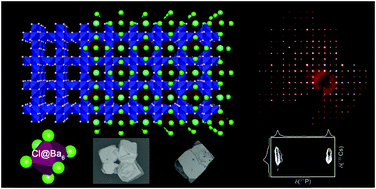
Chem. Commun., 2022,58, 7622-7625
https://doi.org/10.1039/D2CC02304K
Self-assembled benzoselenadiazole-capped tripeptide hydrogels with inherent in vitro anti-cancer and anti-inflammatory activity
Heterocyclic aromatic benzoselenadiazole (BSe)-capped tripeptides self-assemble to form hydrogels and exhibit in vitro anti-cancer and anti-inflammatory activities.
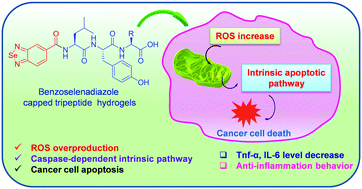
Chem. Commun., 2022,58, 7534-7537
https://doi.org/10.1039/D2CC01160C
Hydride state accumulation in native [FeFe]-hydrogenase with the physiological reductant H2 supports its catalytic relevance
Studies of enzymatic catalysis often rely on non-biological reagents, which may affect catalytic intermediates and produce off-cycle states. Here the influence of buffer and reductant on key intermediates of [FeFe]-hydrogenase are explored.
![Graphical abstract: Hydride state accumulation in native [FeFe]-hydrogenase with the physiological reductant H2 supports its catalytic relevance](/en/Image/Get?imageInfo.ImageType=GA&imageInfo.ImageIdentifier.ManuscriptID=D2CC00671E&imageInfo.ImageIdentifier.Year=2022)
Chem. Commun., 2022,58, 7184-7187
https://doi.org/10.1039/D2CC00671E
Triazine-pyridine chemistry for protein labelling on tyrosine
Herein, we discover the new reactivity of the 1,3,5-triazine moiety reacting with a phenol group and report the development of biocompatible and catalyst-free triazine-pyridine chemistry (TPC) for tyrosine labelling under physiological conditions and profiling in the whole proteome.

Chem. Commun., 2022,58, 7066-7069
https://doi.org/10.1039/D2CC01528E
Mechanistic insights of molecular metal polyselenides for catalytic hydrogen generation
Exploration of efficient molecular metal–selenide HER catalysts and identification of the mechanistic implications induced by the type of incorporated chalcogen.
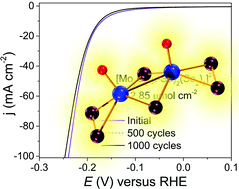
Chem. Commun., 2022,58, 6906-6909
https://doi.org/10.1039/D2CC01226J
Metal–organic cage incorporating thin-film nanocomposite membranes with antifouling properties
Incorporation of functional water-stable metal–organic cages (MOCs) in the reverse osmosis membrane changes the membrane morphology and hydrophilicity to achieve better antifouling properties.
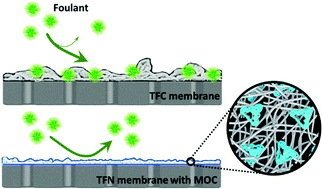
Chem. Commun., 2022,58, 6865-6868
https://doi.org/10.1039/D2CC01032A
Tuning the photophysical properties of luminescent lanthanide complexes through regioselective antenna fluorination
Carbostyrils monofluorinated in the 3, 5, or 6 positions were synthesised via a photochemical isomerisation-cyclisation route, and incorporated into octadentate cyclen triacetate ligands that formed luminescent Tb(III) and Eu(III) complexes.

Chem. Commun., 2022,58, 6853-6856
https://doi.org/10.1039/D2CC01229D
Air-stable plasmonic bubbles as a versatile three-dimensional surface-enhanced Raman scattering platform for bi-directional gas sensing
‘Plasmonic bubbles’ as a versatile, air-stable, centimetre-sized 3D SERS platform with bi-directional gas sensing capabilities.
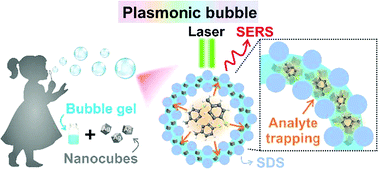
Chem. Commun., 2022,58, 6697-6700
https://doi.org/10.1039/D2CC00597B
AI and computational chemistry-accelerated development of an alotaketal analogue with conventional PKC selectivity
We have designed and synthesized a new PKC ligand with a novel skeleton based on alotaketals through in silico screening, docking analysis, and molecular dynamics simulation. The new ligand has a higher affinity for PKCα-C1A than for PKCδ-C1B.
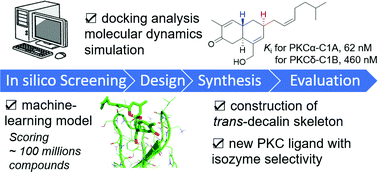
Chem. Commun., 2022,58, 6693-6696
https://doi.org/10.1039/D2CC01759H
Decoupling the metal–insulator transition temperature and hysteresis of VO2 using Ge alloying and oxygen vacancies
Ge alloying enables independent control of forward and reverse metal–insulator transitions in VO2, enabling decoupling of transformation-temperature and hysteresis.
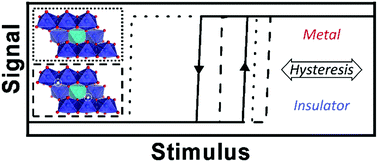
Chem. Commun., 2022,58, 6586-6589
https://doi.org/10.1039/D2CC01599D
Multifunctional molecules with a bipyridyl core ameliorate multifaceted amyloid toxicity
The development of multifunctional modulators by curating the metal chelating properties of bipyridine and biomolecular auxiliaries to ameliorate the multifaceted amyloid toxicity.
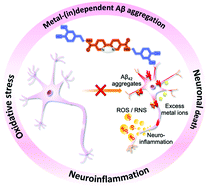
Chem. Commun., 2022,58, 6288-6291
https://doi.org/10.1039/D2CC01168A
Chelation-activated ultralong room-temperature phosphorescence and thermo-/excitation-dependent persistent luminescence
Chelation-activated tunable room-temperature phosphorescence in molecule-based metal complexes.
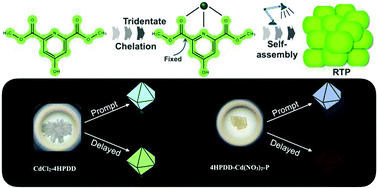
Chem. Commun., 2022,58, 6136-6139
https://doi.org/10.1039/D2CC01485H
Mechanistic insight into rapid oxygen-atom transfer from a calix-functionalized polyoxovanadate
Accelerated rates of O-atom vacancy formation in calix-substituted POV–alkoxide clusters. Mechanisms if OAT dependent on surface ligand substitution patterns.

Chem. Commun., 2022,58, 6004-6007
https://doi.org/10.1039/D2CC01228F
Post-synthetic ligand cyclization in metal–organic frameworks through functional group connection with regioisomerism
Novel post-synthetic ligand cyclization (PSLC) strategy for metal–organic frameworks (MOFs) bearing regioisomeric functional groups has been developed to install benzo-fused heterocycles in MOFs.
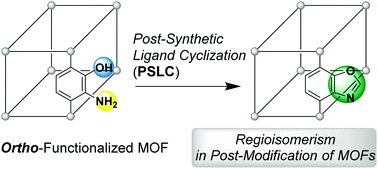
Chem. Commun., 2022,58, 5948-5951
https://doi.org/10.1039/D2CC01031C
Dual-photofunctional organogermanium compound based on donor–acceptor–donor architecture
A dual-photofunctional organogermanium compound based on a donor–acceptor–donor architecture that exhibits thermally activated delayed fluorescence and mechano-responsive luminochromism has been developed.
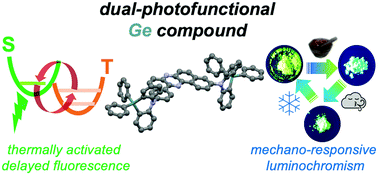
Chem. Commun., 2022,58, 5889-5892
https://doi.org/10.1039/D2CC01568D
High capacity ammonia adsorption in a robust metal–organic framework mediated by reversible host–guest interactions
To understand the exceptional adsorption of NH3 in MFM-300(Sc), we report a full study of the mechanism of adsorption by in situ neutron diffraction, inelastic neutron scattering, synchrotron infrared microspectroscopy, and 45Sc NMR spectroscopy.
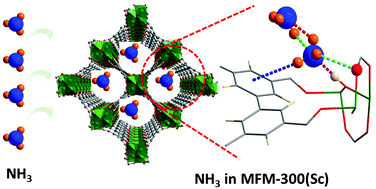
Chem. Commun., 2022,58, 5753-5756
https://doi.org/10.1039/D2CC01197B
Mixed molecular orientations promote charge transport in bulk heterojunction solar cells
This study reveals that a mixture of face-on and edge-on molecular orientations can be favorable for out-of-plane charge transport in solution processed bulk heterojunction organic solar cell active layers.
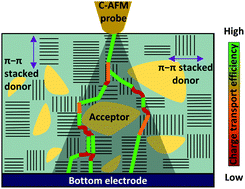
Chem. Commun., 2022,58, 5765-5768
https://doi.org/10.1039/D2CC01234K
A microfluidic organic transistor for reversible and real-time monitoring of H2O2 at ppb/ppt levels in ultrapure water
A microfluidic organic transistor functionalized with phenyboronic acid could monitor not only a reversible boronate anion with H2O2 but also an irreversible conversion into a phenol structure by a continuous flow.
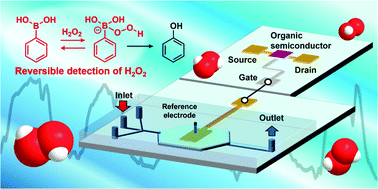
Chem. Commun., 2022,58, 5721-5724
https://doi.org/10.1039/D2CC01224C
Hundred-gram scale fabrication of few-layered silicene by a continuous vapor-dealloying strategy for high-performance lithium storage
A continuous vapor de-alloying strategy for a hundred-gram scale fabrication of silicene with high-performance Li storage capability.
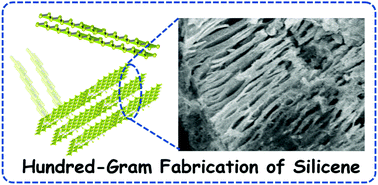
Chem. Commun., 2022,58, 5717-5720
https://doi.org/10.1039/D2CC01116F
About this collection
ChemComm is here to support researchers throughout their careers. To complement our annual Emerging Investigators collection, this brand new special collection showcases high quality research being carried out by international researchers who are more established in their independent careers and have been recognised as making a significant contribution to their field.
New articles will be added to this collection as they are published.